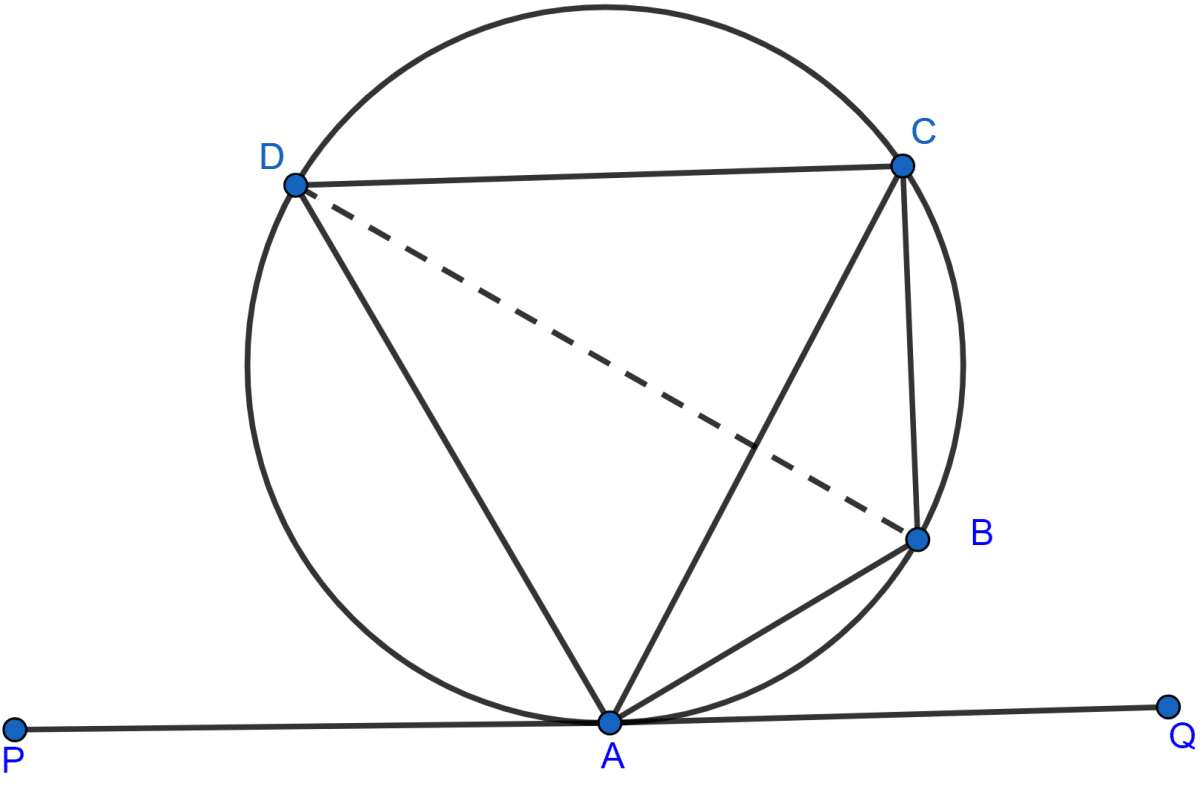Mathematics
In the figure (ii) given below, O is the centre of the circle. AB is a diameter, TPT' is a tangent to the circle at P. If ∠BPT' = 30°, calculate
(i) ∠APT
(ii) ∠BOP

Circles
37 Likes
Answer
From figure,
∠APB = 90° (∵ angles in semicircle is equal to 90)
From figure,
∠APT + ∠APT' = 180° (∵ they form linear pair)
⇒ ∠APT + ∠APB + ∠BPT' = 180°
⇒ ∠APT + 90° + 30° = 180°
⇒ ∠APT + 120° = 180°
⇒ ∠APT = 180° - 120°
⇒ ∠APT = 60°.
Hence, the value of ∠APT = 60°.
(ii) From figure,
BAP = BPT' = 30. (∵ angles in alternate segment are equal.)
Arc BP subtends ∠BOP at the centre and ∠BAP at the remaining part of the circle.
∴ ∠BOP = 2∠BAP (∵ angle subtended at centre by an arc is double the angle subtended at remaining part of circle.)
∠BOP = 2 × 30° = 60°.
Hence, the value of ∠BOP = 60°.
Answered By
22 Likes
Related Questions
In the adjoining figure, O is the centre of the circle. Tangents to the circle at A and B meet at C. If ∠ACO = 30°, find
(i) ∠BCO
(ii) ∠AOB
(iii) ∠APB

In the figure (i) given below, O is the centre of the circle. The tangents at B and D meet at P. If AB is parallel to CD and ∠ABC = 55°, find
(i) ∠BOD
(ii) ∠BPD.

In the adjoining figure, ABCD is a cyclic quadrilateral. The line PQ is the tangent to the circle at A. If ∠CAQ : ∠CAP = 1 : 2, AB bisects ∠CAQ and AD bisects ∠CAP, then find the measures of the angles of the cyclic quadrilateral. Also prove that BD is a diameter of the circle.

In a triangle ABC, the incircle (centre O) touches BC, CA and AB at P, Q and R respectively. Calculate :
(i) ∠QOR
(ii) ∠QPR, given that ∠A = 60°.